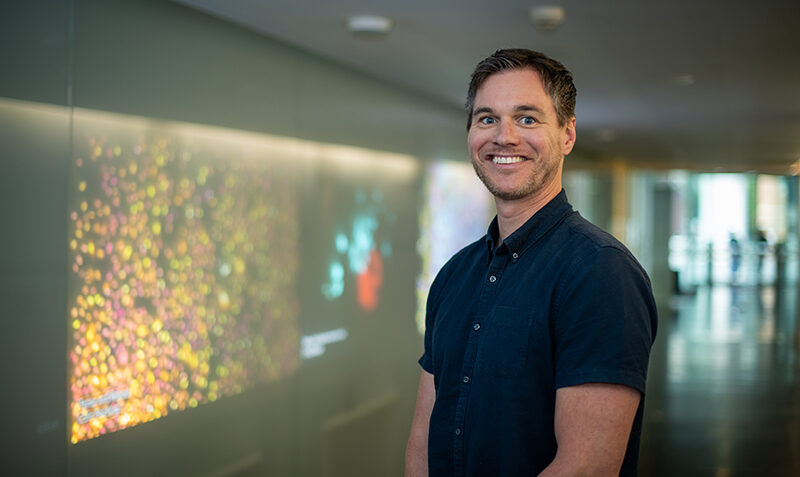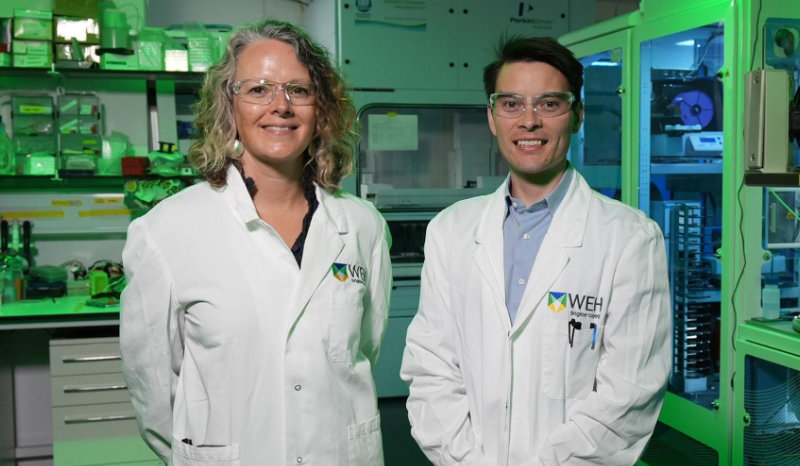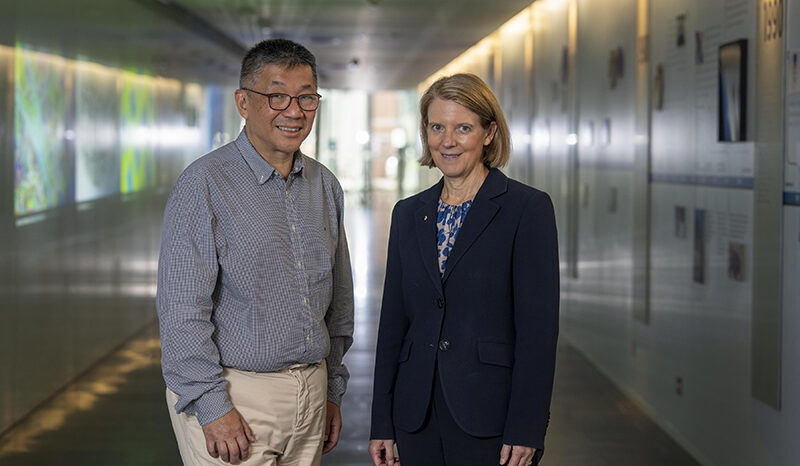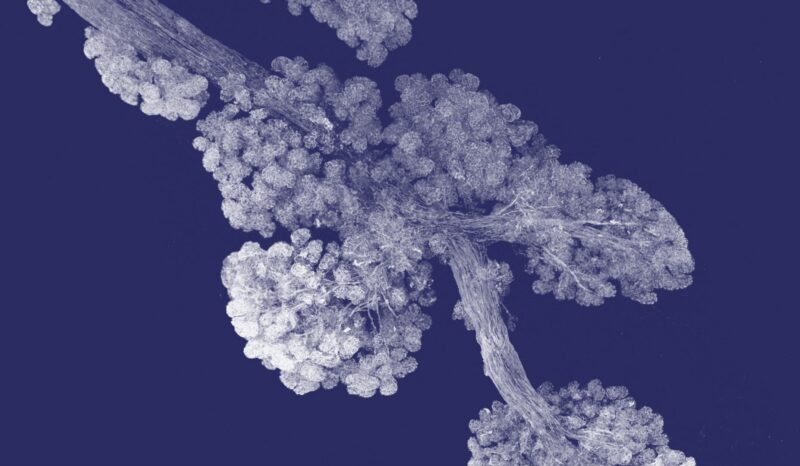Understanding the driver of cancer
Dr Vervoort’s research over the past decade has been to understand the causes and drivers of cancer growth, which could lead to new avenues for therapy.
His work focuses on a key component of gene regulation, known as RNA Polymerase II (RNAPII).
Gene regulation is like a switch that turns on or off to decide when and where your body makes RNA molecules and proteins. It is also like a volume control that adjusts how much of these products your body produces.
This process is crucial for maintaining our health, and when disrupted or deregulated, it can lead to various diseases, such as cancer. A key genetic regulator is RNAPII, the enzyme that reads genetic information contained in our DNA.
Much like a photocopier, RNAPII reads our genetic code and sends copies of it as messages to our cells in a process known as transcription. Our cells then interpret those messages and convert them into proteins.
Dr Vervoort said that when this ‘photocopier’ malfunctions, genetic mutations occur and can fuel cancer growth.
“It turns out that the molecular machinery in our cells can struggle to make faithful copies of the longest genes in our genome,” he said.
“The long genes in our DNA are particularly enriched for DNA-damage repair, so when long genes do not get made, the response can cause cancer.
“This makes the RNAPII pathway a prime candidate for the development of novel anti-cancer treatments.”
Despite the importance of gene regulation to our health, we do not currently have a full understanding of how it works. Dr Vervoort’s innovative and multidisciplinary approach pairs analysis of our entire genetic code with computational methods to address this knowledge gap.









